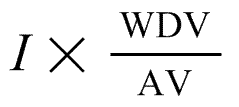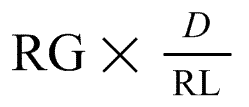- Latest available (Revised)
- Point in Time (01/04/2009)
- Original (As enacted)
Corporation Tax Act 2009
You are here:
- UK Public General Acts
- 2009 c. 4
- Part 8
- Chapter 2
- Show Geographical Extent(e.g. England, Wales, Scotland and Northern Ireland)
- Show Timeline of Changes
Changes over time for: Chapter 2
Version Superseded: 01/04/2010
Alternative versions:
- 01/04/2009- Amendment
- 01/04/2009
Point in time - 01/04/2010- Amendment
Status:
Point in time view as at 01/04/2009.
Changes to legislation:
There are outstanding changes not yet made by the legislation.gov.uk editorial team to Corporation Tax Act 2009. Any changes that have already been made by the team appear in the content and are referenced with annotations.![]()
Changes to Legislation
Changes and effects yet to be applied by the editorial team are only applicable when viewing the latest version or prospective version of legislation. They are therefore not accessible when viewing legislation as at a specific point in time. To view the ‘Changes to Legislation’ information for this provision return to the latest version view using the options provided in the ‘What Version’ box above.
Chapter 2U.K.Credits in respect of intangible fixed assets
720IntroductionU.K.
(1)This Chapter provides for credits to be brought into account by a company for tax purposes in respect of—
(a)receipts in respect of intangible fixed assets that are recognised in determining the company's profit or loss as they accrue (see section 721),
(b)receipts in respect of royalties, so far as the receipts do not give rise to a credit under section 721 (see section 722),
(c)revaluation of an intangible fixed asset (see section 723),
(d)credits recognised for accounting purposes in respect of negative goodwill (see section 724), and
(e)the reversal of previous accounting debits in respect of an intangible fixed asset (see section 725).
(2)This Chapter does not apply in relation to amounts brought into account in connection with the realisation of an intangible fixed asset within the meaning of Chapter 4 (see section 734).
(3)For the rules about those amounts, see that Chapter.
721Receipts recognised as they accrueU.K.
(1)If in a period of account a gain representing a receipt in respect of an intangible fixed asset is recognised in determining the company's profit or loss, a corresponding credit must be brought into account for tax purposes.
(2)The amount of the credit is the same as the amount of the gain recognised by the company for accounting purposes.
(3)Subsection (2) is subject to any adjustments required by this Part or Schedule 28AA to ICTA (provision not at arm's length).
722Receipts in respect of royalties so far as not dealt with under section 721U.K.
(1)So far as a receipt in respect of any royalty does not give rise to a credit under section 721 in the period of account in which it is received or in a subsequent period of account, a credit must be brought into account for tax purposes.
(2)The credit must be brought into account in the accounting period in which the receipt is recognised for accounting purposes.
(3)The amount of the credit is equal to so much of the amount of the receipt as does not give rise to a credit under section 721.
723RevaluationU.K.
(1)If in a period of account there is an increase in the accounting value of an intangible fixed asset on a revaluation, a credit must be brought into account for tax purposes.
(2)The amount of the credit is the lesser of—
(a)the amount corresponding for tax purposes to the increase (see subsection (3)), and
(b)the net total of relevant previous tax debits (see subsection (4)).
(3)The amount corresponding for tax purposes to the increase is—
where—
I is the increase,
WDV is the tax written-down value of the asset immediately before the revaluation, and
AV is the accounting value of the asset by reference to which the revaluation is carried out.
(4)The net total of relevant previous tax debits is—
where—
D is the total debits previously brought into account for tax purposes in respect of the asset, and
C is the total credits so brought into account.
(5)For the purposes of this section “revaluation” includes—
(a)the valuation of an asset for which a value is shown in the company's balance sheet, but which has not previously been the subject of a valuation, and
(b)the restoration of past losses.
(6)This section does not apply to an asset in respect of which an election has been made under section 730 (writing down at fixed rate: election for fixed-rate basis).
724Negative goodwillU.K.
(1)If in a period of account a gain is recognised in determining the company's profit or loss in respect of negative goodwill arising on an acquisition of a business, a corresponding credit must be brought into account for tax purposes.
(2)The amount of the credit is so much of the gain recognised for accounting purposes as, on a just and reasonable apportionment, is attributable to intangible fixed assets.
725Reversal of previous accounting lossU.K.
(1)This section applies if—
(a)in a period of account a gain is recognised in determining the company's profit or loss (“the recognised gain”),
(b)the gain wholly or partly reverses a loss recognised in a previous period of account (“the reversed loss”), and
(c)a debit was brought into account for tax purposes under Chapter 3 (debits in respect of intangible fixed assets) in respect of that loss (“the tax debit”).
(2)A corresponding credit must be brought into account for tax purposes.
(3)The amount of the credit is—
where—
RG is the recognised gain,
D is the tax debit, and
RL is the reversed loss.
(4)This section does not apply to a gain on a revaluation within the meaning of section 723 (see subsection (5) of that section).
Options/Help
Print Options
PrintThe Whole Act
PrintThe Whole Part
PrintThis Chapter only
You have chosen to open The Whole Act
The Whole Act you have selected contains over 200 provisions and might take some time to download. You may also experience some issues with your browser, such as an alert box that a script is taking a long time to run.
Would you like to continue?
You have chosen to open The Whole Act as a PDF
The Whole Act you have selected contains over 200 provisions and might take some time to download.
Would you like to continue?
You have chosen to open The Whole Act without Schedules
The Whole Act without Schedules you have selected contains over 200 provisions and might take some time to download. You may also experience some issues with your browser, such as an alert box that a script is taking a long time to run.
Would you like to continue?
You have chosen to open The Whole Act without Schedules as a PDF
The Whole Act without Schedules you have selected contains over 200 provisions and might take some time to download.
Would you like to continue?
You have chosen to open the Whole Act
The Whole Act you have selected contains over 200 provisions and might take some time to download. You may also experience some issues with your browser, such as an alert box that a script is taking a long time to run.
Would you like to continue?
You have chosen to open the Whole Act without Schedules
The Whole Act without Schedules you have selected contains over 200 provisions and might take some time to download. You may also experience some issues with your browser, such as an alert box that a script is taking a long time to run.
Would you like to continue?
You have chosen to open Schedules only
The Schedules you have selected contains over 200 provisions and might take some time to download. You may also experience some issues with your browser, such as an alert box that a script is taking a long time to run.
Would you like to continue?
Legislation is available in different versions:
Latest Available (revised):The latest available updated version of the legislation incorporating changes made by subsequent legislation and applied by our editorial team. Changes we have not yet applied to the text, can be found in the ‘Changes to Legislation’ area.
Original (As Enacted or Made): The original version of the legislation as it stood when it was enacted or made. No changes have been applied to the text.
Point in Time: This becomes available after navigating to view revised legislation as it stood at a certain point in time via Advanced Features > Show Timeline of Changes or via a point in time advanced search.
See additional information alongside the content
Geographical Extent: Indicates the geographical area that this provision applies to. For further information see ‘Frequently Asked Questions’.
Show Timeline of Changes: See how this legislation has or could change over time. Turning this feature on will show extra navigation options to go to these specific points in time. Return to the latest available version by using the controls above in the What Version box.
Explanatory Notes
Text created by the government department responsible for the subject matter of the Act to explain what the Act sets out to achieve and to make the Act accessible to readers who are not legally qualified. Explanatory Notes were introduced in 1999 and accompany all Public Acts except Appropriation, Consolidated Fund, Finance and Consolidation Acts.
More Resources
Access essential accompanying documents and information for this legislation item from this tab. Dependent on the legislation item being viewed this may include:
- the original print PDF of the as enacted version that was used for the print copy
- lists of changes made by and/or affecting this legislation item
- confers power and blanket amendment details
- all formats of all associated documents
- correction slips
- links to related legislation and further information resources
Timeline of Changes
This timeline shows the different points in time where a change occurred. The dates will coincide with the earliest date on which the change (e.g an insertion, a repeal or a substitution) that was applied came into force. The first date in the timeline will usually be the earliest date when the provision came into force. In some cases the first date is 01/02/1991 (or for Northern Ireland legislation 01/01/2006). This date is our basedate. No versions before this date are available. For further information see the Editorial Practice Guide and Glossary under Help.
More Resources
Use this menu to access essential accompanying documents and information for this legislation item. Dependent on the legislation item being viewed this may include:
- the original print PDF of the as enacted version that was used for the print copy
- correction slips
Click 'View More' or select 'More Resources' tab for additional information including:
- lists of changes made by and/or affecting this legislation item
- confers power and blanket amendment details
- all formats of all associated documents
- links to related legislation and further information resources



